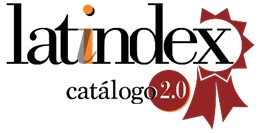Step by step: simplifying and mathematizing the real world with MathCityMap
DOI:
https://doi.org/10.48489/quadrante.23604Keywords:
modelling, outdoor mathematics, digital tools, MathCityMap, authenticity, validationAbstract
Mathematical modelling needs to be taught in realistic contexts. In this paper, we examine the potential of outdoor tasks that are solved by means of the digital tool MathCityMap to learn mathematical modelling stepwise. From a theoretical perspective, it can be assumed that the tasks have the potential to force the “Simplifying/Structuring” and “Mathematizing” steps to occur in an authentic way. In addition, MathCityMap supports the modelling process through hints and an answer validation. In a case study, we compare outdoor tasks with identical indoor tasks to examine in how far these theoretical considerations can be confirmed while using of the system. The results show that the outdoor tasks strongly force the simplifying/structuring step to occur and claim to work as precisely as possible while choosing a model and compensating for inaccuracies. Additionally, the MathCityMap system can support the choice of an exact but still simplified model by means of hints, and triggers an answer validation that might have the potential to make learners rethink the steps of the modelling cycle.
References
Ärlebäck, J., & Albarracín, L. (2019). An extension of the MAD framework and its possible implication for research. In U. Jankvist, M. Van den Heuvel-Panhuizen, & M. Veldhuis (Eds.), Proceedings of the Eleventh Congress of the European Society for Research in Mathematics Education (pp. 1128-1135). Freudenthal Group & Freudenthal Institute, Utrecht University and ERME.
Barbosa, A., & Vale, I. (2020). Math trails through digital technology: An experience with pre-service teachers. In M. Ludwig, S. Jablonski, A. Caldeira, & A. Moura (Eds.), Research on Outdoor STEM Education in the digiTal Age (pp. 47-54). WTM.
Blane, D., & Clarke, D. (1984). A Mathematics trail around the city of Melbourne. Monash Mathematics Education Centre.
Blum, W., & Leiß, D. (2007). How do students and teachers deal with mathematical modelling problems? In C. Haines, P. Galbraith, W. Blum, & S. Khan (Eds.), Mathematical modelling. Education, engineering and economics (pp. 222–231). Horwood.
Blum, W., Galbraith, P., Henn, H.-W., & Niss, M. (2007). Modelling and applications in mathematics education: The 14th ICMI study. Springer.
Borromeo-Ferri, R. (2006). Theoretical and empirical differentiations of phases in the modelling process. ZDM–The International Journal on Mathematics Education, 38(2), 86–95. https://doi.org/10.1007/BF02655883
Buchholtz, N. (2017) How teachers can promote mathematising by means of mathematical city walks. In G. Stillman, W. Blum, & G. Kaiser (Eds.), Mathematical modelling and applications (pp. 49-58). Springer.
Carreira, S., & Baioa, A. (2017). Creating a color palette: The model, the concept, and the mathematics. In T. Dooley, & G. Gueudet (Eds.), Proceedings of the Tenth Congress of the European Society for Research in Mathematics Education (pp. 916-923). DCU Institute of Education and ERME.
Greefrath, G., Kaiser, G., Blum, W., & Borromeo Ferri, R. (2013). Mathematisches modellieren – Eine einführung in theoretische und didaktische hintergründe. In R. Borromeo Ferri, G. Greefrath, G. Kaiser (Eds.), Mathematisches modellieren für schule und hochschule (pp. 11-38). Springer.
Greefrath, G., & Siller, S. (2017). Modelling and simulation with the help of digital tools. In G. Stillman, W. Blum, & G. Kaiser (Eds.), Mathematical modelling and applications (pp. 529-539). Springer.
Hankeln, C. (2020). Validating with the use of dynamic geometry software. In G. Stilman, G. Kaiser & C. Lampen (Eds.), Mathematical modelling education and sense-making (pp. 277-285). Springer.
Herget, W., & Torres-Skoumal, M. (2007). Picture (im)perfect mathematics! In W. Blum, P. Galbraith, H.-W. Henn, & M. Niss (Eds.). Modelling and applications in mathematics education (pp. 379-386). Springer.
KMK (2015). Bildungsstandards im fach mathematik für die allgemeine hochschulreife. Schneckenlohe. Appel & Klinger.
Ludwig, M., & Jablonski, S. (2019). Doing math modelling outdoors – A special class activity designed with MathCityMap. In Proceedings of the 5th International Conference on Higher Education Advances, Valéncia, Spain. http://dx.doi.org/10.4995/HEAd19.2019.9583
Ludwig, M., & Jesberg, J. (2015). Using mobile technology to provide outdoor modelling tasks - The MathCityMap-Project. In Procedia – Social and Behavioral Sciences (Proceedings of the 6th WCES), 191, 2776-2781. https://doi.org/10.1016/j.sbspro.2015.04.517
Ludwig M., & Reit, X.-R. (2013). A cross-sectional study about modelling competency in secondary school. In G. Stillman, G. Kaiser, W. Blum, & J. Brown (Eds.), Teaching mathematical modelling: Connecting to research and practice (pp. 327-337). Springer.
Ludwig, M., Jesberg, J., & Weiß, D. (2013). MathCityMap – eine faszinierende belebung der idee mathematischer wanderpfade. Praxis der Mathematik, 53, 14–19.
Reit, X.-R. (2017). Towards an empirical validation of mathematics teachers' intuitive assessment practice exemplified by modelling tasks. In T. Dooley, & G. Gueudet (Eds.), Proceedings of the Tenth Congress of the European Society for Research in Mathematics Education (pp. 3588-3595). DCU Institute of Education and ERME.
Rosa, M., & Orey, D. (2017). Ethnomodelling as the mathematization of cultural practices. In G. Stillman, W. Blum, & G. Kaiser (Eds.), Mathematical modelling and applications. Crossing and researching boundaries in mathematics education (pp. 153-162). Springer. https://doi.org/10.1007/978-3-319-62968-1_13
Vos, P. (2015). Authenticity in extra-curricular mathematics activities: Researching authenticity as a social construct. In G. Stillmann, W. Blum, & M. Biembengut (Eds.), Mathematical modelling in education research and practice: Cultural, social, and cognitive influences (pp. 105–113). Springer. https://doi.org/10.1007/978-3-319-18272-8_8
Zender, J., Gurjanow, I., Cahyono, A., & Ludwig, M. (2020). New studies in mathematics trails. International Journal of Studies in Education and Science, 1(1), 1-14.










